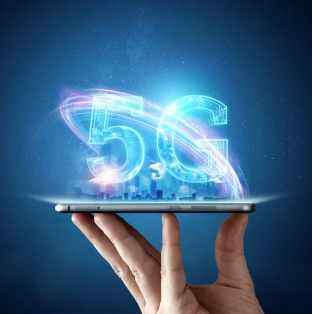In the rapidly evolving world of technology, the terms M2M (Machine-to-Machine) and IoT (Internet of Things) are often used interchangeably. However, they represent distinct concepts with unique applications and implications for the future of connectivity. This blog post delves into the differences between M2M and IoT SIM cards, exploring their evolution, applications, and the role of cellular technology in enabling these innovations.

Introduction to M2M and IoT SIM Cards
The Internet of Things (IoT) is expanding at an unprecedented rate, with applications we use daily becoming increasingly connected. While the exact number of connected devices varies depending on the source, the growth trend is undeniable. Similarly, Machine-to-Machine (M2M) communication, which facilitates direct connectivity between devices without human intervention, plays a crucial role in this expansion. But what differentiates M2M from IoT, especially when it comes to SIM cards? Let’s explore.
The Evolution of Machine-to-Machine Communication
M2M communication has been around for decades, initially focusing on industrial and enterprise applications. It involves direct communication between devices, typically through wired or wireless networks, to perform tasks without human intervention. The advent of cellular technology has significantly expanded M2M capabilities, allowing for cost-effective remote connectivity for a wide range of devices, from heavy machinery to small sensors.
The Role of Cellular Networks in M2M Communication
Cellular networks have played a pivotal role in the growth of M2M communication. By providing reliable and widespread connectivity, these networks have enabled devices to communicate with each other and with centralized systems, even in remote locations. The development of cellular technologies such as 2G, 3G, 4G, and the emerging 5G has further enhanced the capabilities of M2M applications, allowing for faster data transmission, lower latency, and the ability to connect a higher number of devices simultaneously.
Understanding IoT: Beyond M2M Connectivity
IoT takes M2M communication a step further by creating a network of interconnected devices that can communicate not only with each other but also with centralized systems, applications, and people. This network is data-centric, with IoT devices collecting, transmitting, and often analyzing data to improve efficiency, enhance user experiences, and create new services. IoT represents a broader concept, encompassing the entire ecosystem of connected devices and their interactions.
The Emergence of IoT Platforms
The growth of IoT has led to the development of IoT platforms, which provide the necessary infrastructure for managing and analyzing data from connected devices. These platforms offer a range of services, including device management, data storage, and analytics, enabling businesses to gain insights from their IoT data and make informed decisions. By leveraging IoT platforms, businesses can optimize their operations, reduce costs, and create new revenue streams.
Key Differences Between M2M and IoT SIM Cards
While M2M and IoT SIM cards serve the purpose of connecting devices to cellular networks, there are notable differences in their application and functionality. M2M SIM cards are typically used in scenarios where devices communicate directly with each other or a central server. In contrast, IoT SIM cards are designed for a broader range of applications, supporting the vast and diverse ecosystem of IoT devices that require connectivity to function within the larger IoT network.
M2M SIM Cards: Focused on Device-to-Device Communication
M2M SIM cards are specifically designed for applications that involve direct communication between devices. These SIM cards enable devices to exchange data with each other or with a central server, facilitating tasks such as remote monitoring, asset tracking, and predictive maintenance. M2M SIM cards are often used in industrial settings, where devices need to communicate with each other to ensure smooth and efficient operations.
IoT SIM Cards: Enabling a Connected Ecosystem
IoT SIM cards, on the other hand, are designed to support a wide range of connected devices that form part of the larger IoT ecosystem. These SIM cards enable devices to collect and transmit data to other devices, systems, and users, facilitating the creation of interconnected networks that enhance convenience, safety, and efficiency. IoT SIM cards are used in various applications, from smart homes and wearable devices to smart cities and industrial IoT.
The Role of Cellular Technology in M2M and IoT
Cellular technology is a cornerstone of both M2M and IoT, providing the necessary connectivity for remote devices. The evolution of cellular technologies, including 4G, LTE, and the emerging 5G, has significantly enhanced the capabilities of M2M and IoT applications. These advancements enable faster data transmission, lower latency, and the ability to connect a higher number of devices simultaneously, paving the way for more sophisticated and efficient IoT ecosystems.
The Impact of 5G on M2M and IoT
The emergence of 5G technology promises to revolutionize the world of M2M and IoT. With its ultra-fast data speeds, low latency, and massive device connectivity, 5G has the potential to enable a new generation of IoT applications that were previously impossible to achieve. From autonomous vehicles and smart cities to advanced industrial automation and virtual reality, 5G is set to unlock a wealth of opportunities for businesses and consumers alike.
Applications and Use Cases of M2M SIM Cards
M2M SIM cards are widely used in various industries for specific applications that require direct device-to-device communication. For example, in the logistics sector, M2M SIM cards enable real-time tracking of fleet vehicles, while in manufacturing, they facilitate machine monitoring and predictive maintenance. These applications highlight the role of M2M in improving operational efficiency and reliability in targeted scenarios.
Logistics and Fleet Management
In logistics, M2M SIM cards can be used for fleet vehicle tracking and the GPS monitoring of assets. Specifically, they are often used to monitor driver behavior and predict mechanical issues of vehicles. Equally, M2M SIM cards are used to power IoT sensors, which enable logistics managers to track goods and packages anywhere in the world. This means they can keep on top of delivery schedules.
Manufacturing and Industrial Automation
Embedded M2M SIMs give manufacturing firms the power to connect machinery to central maintenance platforms. This provides engineers with real-time reports on the state of equipment and potential maintenance requirements. Access to this information means machinery can be scheduled for repair before it fails using predictive maintenance, saving firms money.
Security and Surveillance
Most CCTV and security systems can connect to the internet via WiFi, but what happens if the WiFi goes down? M2M SIMs provide backup connectivity by connecting to a local mobile network. This means that security system connectivity is rarely disrupted.
Retail and Inventory Management
M2M SIMs are increasingly in use across retail, commonly for monitoring inventory. M2M sensors can alert supply chain managers to low stock levels, enabling them to replenish stock more efficiently and avoid stockouts.
Industrial Environments and Harsh Conditions
In most industrial settings, WiFi is readily available. However, standard wireless tech is susceptible to damage in extreme conditions like heat, cold, large movements such as the vibration of heavy machinery. M2M SIMs come into their own in such conditions because they offer a high level of durability that can withstand the toughest settings.
Exploring IoT SIM Cards Applications
IoT SIM cards, on the other hand, find applications in a broader range of scenarios, from smart homes and wearable devices to smart cities and industrial IoT. These SIM cards support the connectivity of devices that collect and share data with other devices, systems, and users, creating interconnected ecosystems that enhance convenience, safety, and efficiency. For instance, IoT SIM cards enable smart meters to transmit usage data to utility providers, facilitating more accurate billing and resource management.
Smart Homes and Consumer Electronics
IoT SIM cards are increasingly used in smart home applications, enabling devices such as thermostats, security cameras, and appliances to connect to the internet and communicate with each other. This connectivity allows homeowners to remotely control and monitor their devices, enhancing convenience and energy efficiency.
Wearable Devices and Healthcare
IoT SIM cards are also used in wearable devices, such as fitness trackers and smartwatches, which collect and transmit health data to users and healthcare providers. This data can be used to monitor and improve health outcomes, as well as to enable remote patient monitoring and telemedicine services.
Smart Cities and Infrastructure
IoT SIM cards play a crucial role in the development of smart cities, enabling the connectivity of various devices and systems that improve urban living. Examples include smart street lighting, traffic management systems, and waste management solutions, all of which rely on IoT SIM cards to transmit data and enable real-time decision-making.
Industrial IoT and Advanced Automation
In the realm of industrial IoT, IoT SIM cards are used to connect a wide range of devices, from sensors and actuators to robots and autonomous vehicles. This connectivity enables advanced automation and real-time data analysis, driving improvements in productivity, safety, and efficiency.
Challenges and Considerations in M2M and IoT
Despite the promising potential of M2M and IoT, there are challenges to consider, including security vulnerabilities, data privacy concerns, and the complexity of managing vast networks of connected devices. Ensuring robust security measures and efficient device management are critical for the successful deployment and operation of M2M and IoT applications.
Security and Privacy Concerns
As the number of connected devices grows, so too does the risk of security breaches and data privacy violations. Ensuring that M2M and IoT devices are secure and that data is protected is a top priority for businesses and consumers alike. This requires ongoing investment in security technologies, as well as the development of industry standards and best practices for securing connected devices.
Device Management and Scalability
Managing large networks of connected devices can be a complex and time-consuming task, particularly as the number of devices and applications continues to grow. Businesses must invest in robust device management solutions that enable them to monitor, update, and troubleshoot devices remotely, ensuring the smooth operation of their M2M and IoT networks.
Future Trends in IoT and M2M Technologies
The future of IoT and M2M technologies is poised for significant growth, driven by advancements in cellular connectivity, artificial intelligence, and edge computing. These technologies will enable more sophisticated applications, such as autonomous vehicles, smart cities, and advanced industrial automation, further blurring the lines between the physical and digital worlds.
Conclusion: Embracing the IoT Revolution
The distinction between M2M and IoT SIM cards underscores the evolving landscape of connectivity and the diverse applications of these technologies. As we continue to embrace the IoT revolution, understanding the nuances of M2M and IoT SIM cards is essential for leveraging their full potential. The journey towards a more connected and intelligent world is just beginning, and the possibilities are as limitless as our collective imagination.
To stay updated on the latest trends and insights in IoT and M2M technologies, explore our other blog posts and resources. Whether you’re interested in IoT-based predictive maintenance, the evolving landscape of IoT security, or how IoT and AR are revolutionizing industries, we’ve got you covered. Join us as we navigate the exciting world of IoT and embrace the technologies shaping our future.





